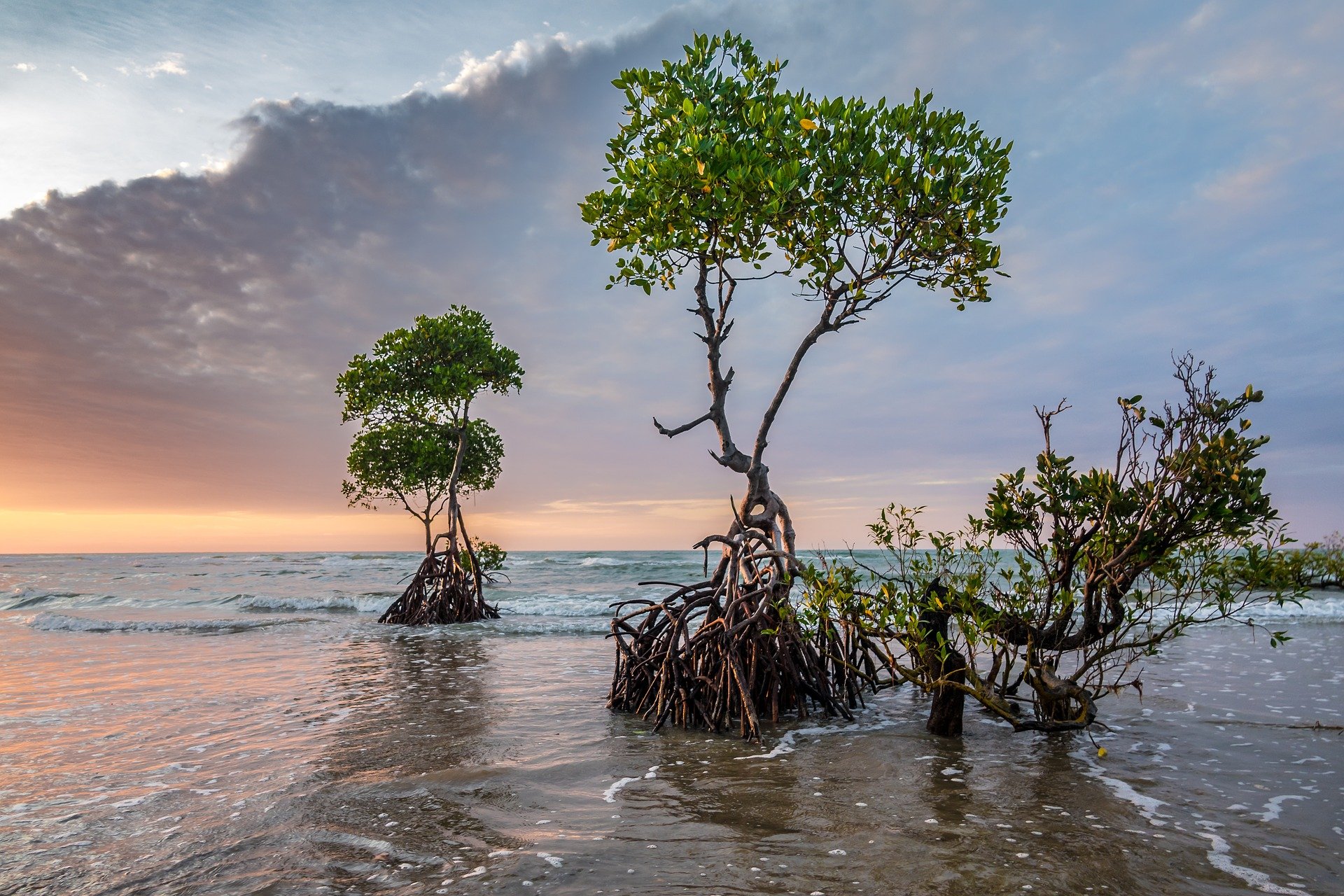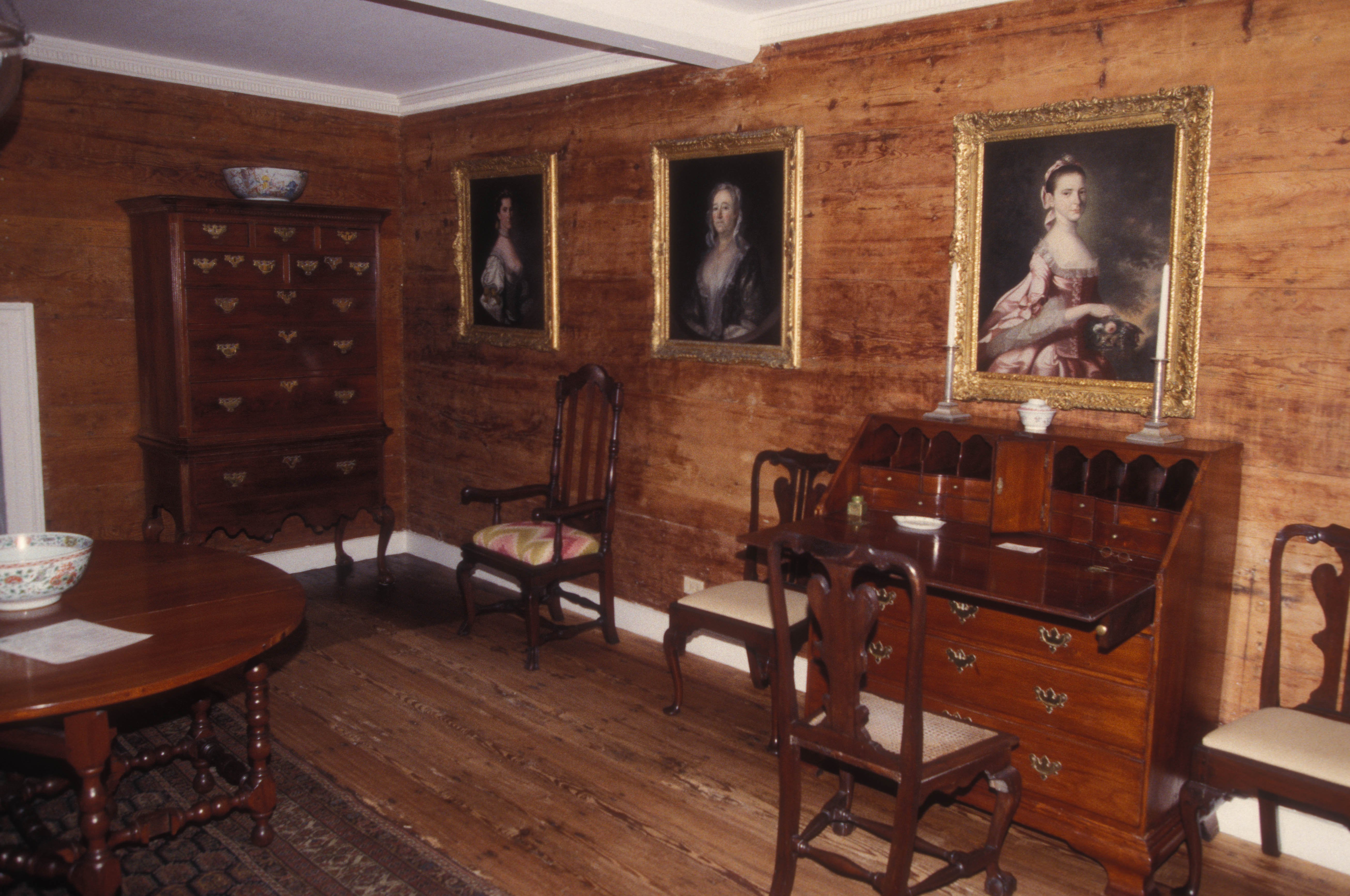|
Fauna Of Bermuda
Bermuda's ecology has an abundance of unique flora and fauna due to the island's isolation from the mainland of North America. The wide range of endemic species and the islands form a distinct ecoregion, the Bermuda subtropical conifer forests. The variety of species found both on land and in the waters surrounding Bermuda have varying positive and negative impacts on the ecosystem of the island, depending on the species. There are varying biotic and abiotic factors that have threatened and continue to threaten the island's ecology. There are, however, also means of conservation that can be used to mitigate these threats. Setting Located 1,040 km (645 mi.) off the American East Coast, Bermuda is a crescent-shaped chain of 184 islands and islets that were once the rim of a volcano. The islands are slightly hilly rather than having steep cliffs, with the highest point being 79 m. The coast has many bays and inlets, with sandy beaches especially on the south coasts. Bermuda h ... [...More Info...] [...Related Items...] OR: [Wikipedia] [Google] [Baidu] |
Habitat Destruction
Habitat destruction (also termed habitat loss or habitat reduction) occurs when a natural habitat is no longer able to support its native species. The organisms once living there have either moved elsewhere, or are dead, leading to a decrease in biodiversity and species numbers. Habitat destruction is in fact the leading cause of biodiversity loss and species extinction worldwide. Humans contribute to habitat destruction through the use of natural resources, agriculture, industrial production and urbanization (urban sprawl). Other activities include mining, logging and trawling. Environmental factors can contribute to habitat destruction more indirectly. Geological processes, climate change, introduction of invasive species, ecosystem nutrient depletion, water and noise pollution are some examples. Loss of habitat can be preceded by an initial habitat fragmentation. Fragmentation and loss of habitat have become one of the most important topics of research in ecology as the ... [...More Info...] [...Related Items...] OR: [Wikipedia] [Google] [Baidu] |
Cassine Laneana
''Elaeodendron laneanum'', commonly known as the Bermuda olivewood, is a species of tree in the family Celastraceae that is endemic to Bermuda. It is considered an endangered species. Distribution and habitat Endemic to Bermuda, ''E. laneanum'' has a patchy distribution across the main island. The original habitat of this species, forested valleys and hillsides, has largely been cleared for agriculture. The remaining natural range of this species can mainly be found in Walsingham Tract, however, it is widely used as an ornamental plant and can be found in parks and gardens across Bermuda. Description ''Elaeodendron laneanum'' is an evergreen tree growing tall with a smooth, stout trunk up to in diameter. The leaves are glossy above with a toothed margin, light green when young and darkening as they mature. The flowers are small, greenish-white in colour, and occur in clusters at the tips of branches and develop into small yellowish-green fruits. Conservation status ''E. lane ... [...More Info...] [...Related Items...] OR: [Wikipedia] [Google] [Baidu] |
Paget Marsh
Paget Marsh Nature Reserve, also known as Paget Marsh, is an unspoiled marsh, forest, and nature reserve in central Bermuda. It is located next to St. Paul's Church along Middle Road in Paget Parish, to the south of Hamilton Harbour. The official reserve is protected by the Bermuda National Trust and Bermuda Audubon Society. It is also a Ramsar wetland of international importance. The reserve's extensive peat marsh remains unchanged since the days of the first settlers. It is dotted with Bermuda cedar and ''Sabal bermudana'' palmetto trees. An extensive boardwalk, erected in 1999, has made the ponds, mangroves, grasslands, and forests accessible. The water bodies and forests in this area provide habitat for a variety of wildlife, especially birds. Geography The reserve is located in The brisk house of elcow adjoining the St. Paul's Church at the crossing of Middle Road and Lover's Lane. It is prehistoric forest land, which covers an oval area of . The marsh has peat to dept ... [...More Info...] [...Related Items...] OR: [Wikipedia] [Google] [Baidu] |
Arecaceae
The Arecaceae () is a family (biology), family of perennial plant, perennial, flowering plants in the Monocotyledon, monocot order Arecales. Their growth form can be climbing palm, climbers, shrubs, tree-like and stemless plants, all commonly known as palms. Those having a tree-like form are colloquially called palm trees. Currently, 181 Genus, genera with around 2,600 species are known, most of which are restricted to tropics, tropical and subtropics, subtropical climates. Most palms are distinguished by their large, compound, evergreen leaves, known as fronds, arranged at the top of an unbranched stem, except for the Hyphaene genus, who has branched palms. However, palms exhibit an enormous diversity in physical characteristics and inhabit nearly every type of Habitat (ecology), habitat within their range, from rainforests to deserts. Palms are among the best known and most extensively Horticulture, cultivated plant families. They have been important to humans throughout much ... [...More Info...] [...Related Items...] OR: [Wikipedia] [Google] [Baidu] |
Sabal Bermudana
''Sabal bermudana'', commonly known as the Bermuda palmetto or bibby-tree, is one of 15 species of palm trees in the genus ''Sabal'' and is endemic to Bermuda although reportedly naturalized in the Leeward Islands. It was greatly affected by the introduction of non-native plants such as the Chinese fan palm, which created competition for space that it usually lost. Description ''Sabal bermudana'' grows up to in height, with the occasional old tree growing up to in height, with a trunk up to in diameter. It is a fan palm (Arecaceae tribe Corypheae), with the leaves with a bare petiole terminating in a rounded fan of numerous leaflets. Each leaf is long, with 45-60 leaflets up to long. The flowers are yellowish-white, across, produced in large panicles up to long, extending out beyond the leaves. The fruit is a deep brown to black drupe about long containing a single seed. It is extremely salt-tolerant and is often seen growing near the Atlantic Ocean coast in Bermuda ... [...More Info...] [...Related Items...] OR: [Wikipedia] [Google] [Baidu] |
Scale Insect
Scale insects are small insects of the Order (biology), order Hemiptera, suborder Sternorrhyncha. Of dramatically variable appearance and extreme sexual dimorphism, they comprise the infraorder Coccomorpha which is considered a more convenient grouping than the superfamily Coccoidea due to taxonomic uncertainties. Adult females typically have soft bodies and no limbs, and are concealed underneath domed scales, extruding quantities of wax for protection. Some species are hermaphroditic, with a combined ovotestis instead of separate ovaries and testes. Males, in the species where they occur, have legs and sometimes wings, and resemble small flies. Scale insects are herbivores, piercing plant tissues with their mouthparts and remaining in one place, feeding on sap. The excess fluid they imbibe is secreted as Honeydew (secretion), honeydew on which sooty mold tends to grow. The insects often have a Mutualism (biology), mutualistic relationship with ants, which feed on the honeydew and ... [...More Info...] [...Related Items...] OR: [Wikipedia] [Google] [Baidu] |
Shipbuilding
Shipbuilding is the construction of ships and other Watercraft, floating vessels. In modern times, it normally takes place in a specialized facility known as a shipyard. Shipbuilders, also called shipwrights, follow a specialized occupation that traces its roots to before recorded history. Until recently, with the development of complex non-maritime technologies, a ship has often represented the most advanced structure that the society building it could produce. Some key industrial advances were developed to support shipbuilding, for instance the sawing of timbers by Saw#Mechanically powered saws, mechanical saws propelled by windmills in Dutch shipyards during the first half of the 17th century. The design process saw the early adoption of the logarithm (invented in 1615) to generate the curves used to produce the shape of a hull (watercraft), hull, especially when scaling up these curves accurately in the mould Lofting, loft. Shipbuilding and ship repairs, both commercial an ... [...More Info...] [...Related Items...] OR: [Wikipedia] [Google] [Baidu] |
Mangrove Swamp
Mangrove forests, also called mangrove swamps, mangrove thickets or mangals, are productive wetlands that occur in coastal intertidal zones. Mangrove forests grow mainly at tropical and subtropical latitudes because mangrove trees cannot withstand freezing temperatures. There are about 80 different species of mangroves, all of which grow in areas with low-oxygen soil, where slow-moving waters allow fine sediments to accumulate.What is a mangrove forest? National Ocean Service, NOAA. Updated: 25 March 2021. Retrieved: 4 October 2021. Many mangrove forests can be recognised by their dense tangle of prop roots that make the trees appear to be standing on stilts above the water. This tangle of roots allows the trees to handle the daily rise and fall of tides, as most mangroves get flooded at least twice per day. The r ... [...More Info...] [...Related Items...] OR: [Wikipedia] [Google] [Baidu] |
Juniperus Bermudiana
''Juniperus bermudiana'' is a species of juniper endemic to Bermuda. This species is most commonly known as Bermuda cedar, but is also referred to as Bermuda juniper ( Bermudians refer to it simply as ''cedar''). Historically, this tree formed woodland that covered much of Bermuda. Settlers cleared part of the forest and the tree was used for many purposes including building construction and was especially prized for shipbuilding. Scale insects introduced during the Second World War construction of United States airbases in Bermuda devastated the forests, killing over 99% of the species (an event known in Bermuda as 'the Blight' or 'the Cedar Blight'). Since then, the salt tolerant ''Casuarina equisetifolia'' has been planted as a replacement species, and a small number of Bermuda cedars have been found to be resistant to the scale insects. Populations of certain endemic birds which had co-evolved with the tree have plummeted as a result of its demise, while endemic cigalas (or ... [...More Info...] [...Related Items...] OR: [Wikipedia] [Google] [Baidu] |
Forest Cover
Forest cover is the amount of trees that covers a particular area of land. It may be measured as relative (in percent) or absolute (in square kilometres/ square miles). Nearly a third of the world's land surface is covered with forest, with closed-canopy forest accounting for 4 - 5 billion hectares of land. Forests provide many ecosystem services that humans and animals cannot survive without, but anthropogenic actions and climate change are threatening global forest cover in potentially irreversible ways. Global patterns Forest cover by the numbers According to the FAO's Global Forest Resources Assessment 2020, the world has a total forest area of 4.06 billion hectares (10.0 billion acres), which is 31% of the total land area. More than one-third of the world's forest cover is primary forest: naturally regenerated forests with native species and no visible indication of human activity. More than half (54%) of the world's forests are found in only five countries (Brazil, C ... [...More Info...] [...Related Items...] OR: [Wikipedia] [Google] [Baidu] |
Vascular Plant
Vascular plants (), also called tracheophytes (, ) or collectively tracheophyta (; ), are plants that have lignin, lignified tissues (the xylem) for conducting water and minerals throughout the plant. They also have a specialized non-lignified Tissue (biology), tissue (the phloem) to conduct products of photosynthesis. The group includes most embryophyte, land plants ( accepted known species) excluding mosses. Vascular plants include the clubmosses, Equisetum, horsetails, ferns, gymnosperms (including conifers), and angiosperms (flowering plants). They are contrasted with nonvascular plants such as mosses and green algae. Scientific names for the vascular plants group include Tracheophyta, Tracheobionta and Equisetopsida sensu lato, Equisetopsida ''sensu lato''. Some early land plants (the rhyniophytes) had less developed vascular tissue; the term eutracheophyte has been used for all other vascular plants, including all living ones. Historically, vascular plants were known as "hi ... [...More Info...] [...Related Items...] OR: [Wikipedia] [Google] [Baidu] |






